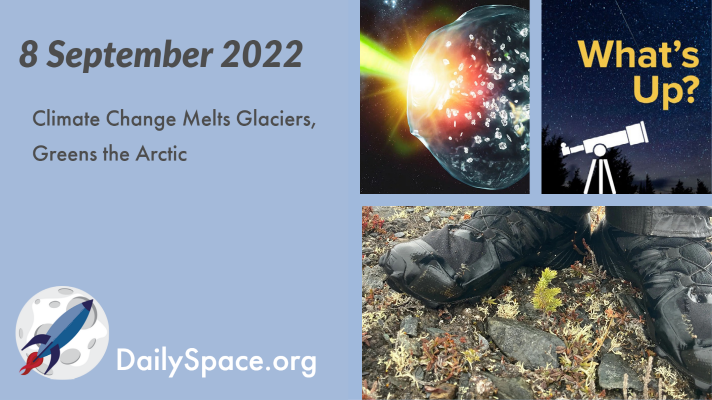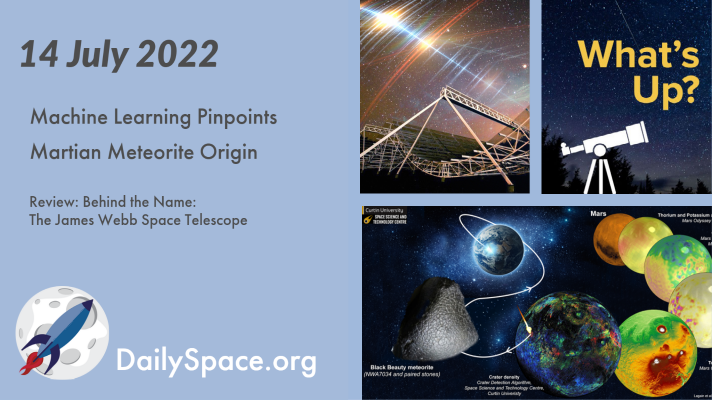
Sep 16, 2022 | Climate Change, Cosmology, Curiosity, Daily Space, Earth, Exoplanets, JAXA, Mars, Moon, Physics, Quantum, Rockets, Space China, Space History, Spacecraft, Supernovae, White Dwarfs
Data and images from NASA’s Curiosity rover found evidence that wind played a key role in erosional processes on the red planet, despite the lower atmospheric volume. Plus, astrophysics and cosmology news, a baby exoplanet, and this week in space history, we look back at an uncrewed lunar mission from Japan.

Sep 10, 2022 | Crewed Space, Daily Space, Exoplanets, Galaxies, Mars, Milky Way, Space History, Space Policy, Star Forming Region, Stars
A population study of 43 exoplanets orbiting M-dwarf stars used both the transit method and radial velocity method to find the densities of the worlds and a surprising pattern emerged. The planets are less dense than expected, suggesting they are not purely rock but half-rock and maybe half-water. Plus, star factories in the Milky Way, glaciers on ancient Mars, and This Week in Space History.

Sep 9, 2022 | Climate Change, Daily Space, Earth, Exoplanets, Mars, Moon, Nebulae, Neptune, Our Solar System, Rockets, Science, Sky Watching, Space China, Spacecraft, Uranus
As global temperatures rise, Earth observations show that glaciers are retreating and ice sheets are melting everywhere from Greenland to Antarctica while regions of the Arctic are getting greener. Plus, collaborations lead to new Mars and exoplanet discoveries, several rockets launched, and this week’s What’s Up involves Dr. Brian May of Queen.

Sep 7, 2022 | Artemis, Blue Origin, Cosmology, Crewed Space, Daily Space, ESA, Exoplanets, Galaxies, ISRO, Jupiter, JWST, Mars, Mars 2020, Perseverance, Rocket Lab, Rockets, Space China, Space Policy, SpaceX, Starlink, Stars, The Sun
As we return from our summer hiatus, we are back with a rundown of some of the stories that came out during the break. On the planetary front, JWST has been taking amazing images and learning about exoplanets. On the astrophysics front, we’ve got stories on dark matter and Betelgeuse. And there were thirty orbital launches, including a whole lot of Starlinks… but not including Artemis.

Jul 15, 2022 | Crewed Space, Daily Space, Earth, Fast Radio Bursts, Jupiter, Mars, Review, Science, Sky Watching, Spacecraft, SpaceX, Supernovae
Using layers of data from a variety of Martian missions, researchers have developed a machine learning algorithm that identified the actual crater from which a particular Martian meteorite originated. Plus, a radio heartbeat, and our last What’s Up and review of the season.

Jul 6, 2022 | Daily Space, Galaxies, Mars, Moon, Nebulae, Neutron Stars / Pulsars, Rockets, Rovers, Space China, Virgin Orbit, Zhurong
Scientists observing the Manatee Nebula find that the supernova remnant contains a stellar-mass black hole that is emitting powerful, high-energy jets, creating the strange, double-lobed shape. Plus, rocket launches, mission updates from Mars and the Moon, and a spinning galaxy from the early universe.








 We record most shows live, on Twitch. Follow us today to get alerts when we go live.
We record most shows live, on Twitch. Follow us today to get alerts when we go live.